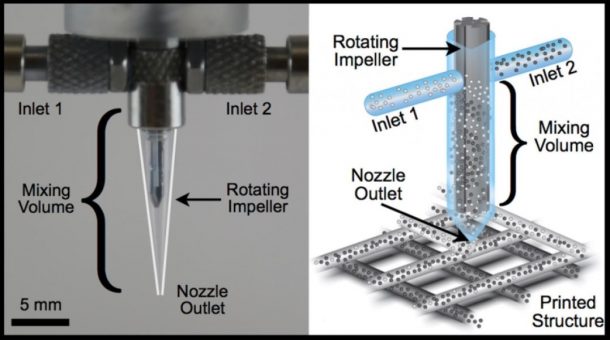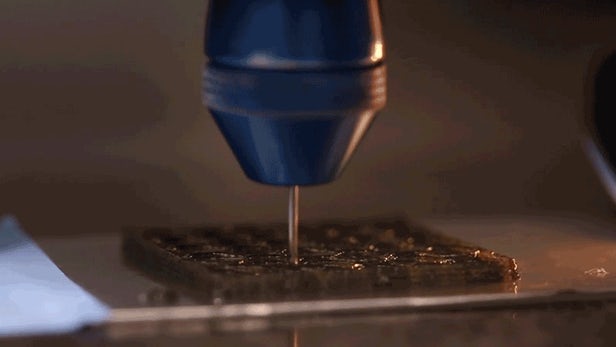3D printing has seen many breakthroughs over the past couple of years. There have been objects that can connect to the internet without a power supply, phone cases that can analyze blood, and doctors can even make bones. A new technique known as rotational 3D printing has been introduced by Harvard engineers and it lets you choose the characteristics of the material yourself.
The spinning printer head allows the objects to be arranged in different orientations at different parts of the printed object in order to boost its strength, stiffness and resistance to damage. This is something new, as a normal 3D printer would have to just drop material on a specific spot in order to strengthen it.

Rotational 3D printing allows the users to configure the properties of individual areas of an object by making changes to the microstructures. The spinning printer head can send streams of ink in a given direction and lines up the micro-fibres in a way that can make them bear more load or resist more damage. It also provides us with a way around just dumping more material at a given spot.
“Rotational 3D printing can be used to achieve optimal, or near optimal, fibre arrangements at every location in the printed part, resulting in higher strength and stiffness with less material,” says Brett Compton, co-author of a study describing the technique. “Rather than using magnetic or electric fields to orient fibres, we control the flow of the viscous ink itself to impart the desired fibre orientation.”
Rotational 3D printing allows users to pinpoint the locations that need to be reinforced during software planning. The printer does the job on its own afterward.
“One of the exciting things about this work is that it offers a new avenue to produce complex microstructures, and to controllably vary the microstructure from region to region,” says Jordan Raney, co-author of the study. “More control over structure means more control over the resulting properties, which vastly expands the design space that can be exploited to optimize properties further.”
This will certainly help a lot of manufacturers in making customized parts.

